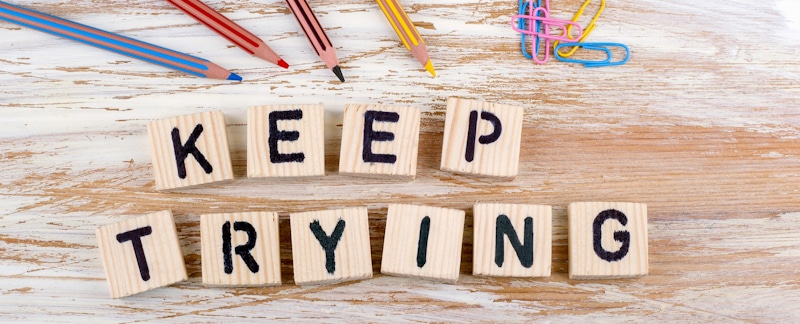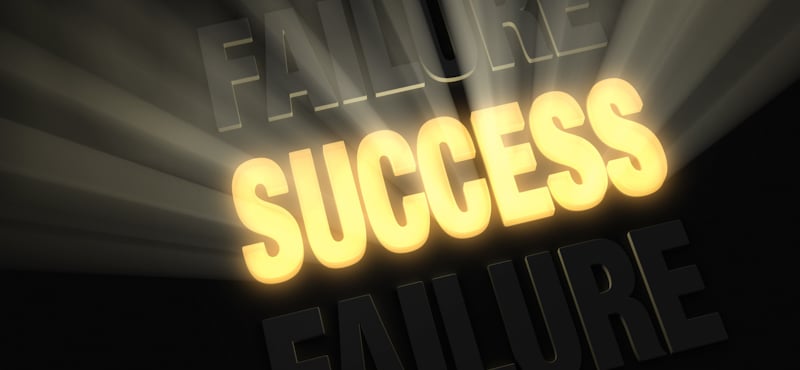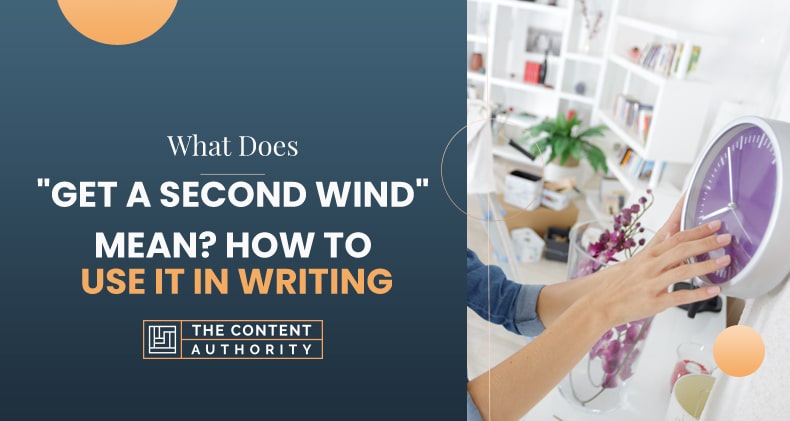When someone has no gas in the tank, they usually need a few hours to recover and get back to their usual self or restore their diffused energy. Quite often, a good night’s sleep, a power nap, or even a dose of caffeine does the trick. But, at times, a “second wind” provides that necessary energy surge.
The phrase “get a second wind” means “to gain renewed strength after a phase of fatigue”. Getting thoroughly exhausted after lifting weights and then suddenly wanting to lift more is “getting a second wind”. The phrase can be used in texts to mean “regaining breath or energy” or metaphorically.
A “second wind” is a bodily phenomenon that kicks in by itself. Keep reading to learn more about it, what the phrase “get a second wind” means, how to use it in texts (with example sentences), and lots more.

“Get a Second Wind” – Meaning
The phrase “get a second wind” denotes “a return of energy or strength that renders it feasible to resume or carry on with an effort-intensive activity”. The energy surge makes it possible to continue working on an activity even after feeling too exhausted (mentally or physically). The term “second wind” means “new energy or strength” or “renewed endurance”.
An alternate term or phrase for the saying is “a new lease of life” – if using the expression in texts symbolically. If the phrase is being used to refer to the “proper oxygen balance” that an exhausted body finds to counteract lactic acid build-up in the muscles, “a new lease of life” is not the correct replacement phrase.
A few other terms that are related to (if not synonymous with) “get a second wind” in meaning include “enliven”, “invigorate“, “recuperate”, “bounce back”, “refresh”, etc. If you choose to use any of these similar meaning terms in your texts instead of “second wind”, the usage won’t be “incorrect”.
What is “Second Wind”, From a “Physiological” Perspective?
In medical language, the term “second wind” denotes recovering full respiratory power after the initial fatigue, courtesy of improved heart action. The tiredness, as alluded to above, could be physical or mental. When you get your second wind, you can breathe much more comfortably or normally.
During any demanding exercise, like long-distance running, the body’s requirement for oxygen to create energy is greater compared to the blood’s existing oxygen supply, courtesy of respiration. This less-than-ideal production of energy produces lactic acid. If the body’s oxygen supply is not quickly restored, it could result in lactic acid accumulation. The “second wind” is believed to help restore that balance.
Some people or their bodies could need more time than average to balance their oxygen and lactic acid levels. People who have respiratory disease could also have this less energy production condition. The “second wind” supposedly lets runners and other athletes use their oxygen resources to their maximum potential.
Endorphins help generate the feeling of wellbeing and euphoria in people who indulge in various forms of exercise. Proponents of “second wind” posit the early endorphin release causes the second wind. The advocates also believe “second wind” is synonymous with or closely related to “the runner’s high”.
It’s Real, But Not Predictable
Unlike some things that people claim to experience, “second wind” is not a hallucination or some placebo effect. It takes place for real and as clearly explained above, there’s science involved. But you have little to no control over when and how that gust of energy hits you.
A “second wind” is not something you can call upon when you feel like it. Multiple factors – right from training frequency and intensity to your physical shape – determine when you get a puff of that energy wind.
When your body’s temperature is above average, your second wind could kick in after usually about 10 minutes. It comes to the fore because your body right before it is not focused on expelling additional carbon dioxide. It instead is intaking more oxygen – the process being referred to as “aerobic energy production” (or aerobic metabolism).
That results in easier breathing, less pain, and revived confidence that allows you to push yourself harder to achieve something that didn’t seem plausible only a few minutes ago.
As your physiology gets used to the training and regulation of energy, the odds of your “second wind” kicking in at more frequent intervals will go up, thanks to your muscles and heart becoming a lot more efficient and conditioned.
Kindly note, a second wind doesn’t last too long. If it kicks in and you fail to capitalize on it soon enough, you lose the particular energy spurt for good.

Using the Phrase “Get a Second Wind” in Texts
True to its literal meaning, the phrase is used in texts to communicate how people suddenly recover from a phase of lethargy or tiredness and get back on their feet. It instills hope. For example:
- I felt I could not walk any further after the hour-long trek. But after seeing the splendid waterfalls in the distance, I got my second wind.
- We hope the region gets its second wind, and that signifies a new beginning.
The expression need not be written as it is. It can be cut short for writing convenience, like in the sentences below:
- As one of the industry’s major players, this new law has afforded us a second wind.
- Some scientists and doctors posit a second wind could be the outcome of one’s body finding the correct oxygen balance to neutralize lactic acid build-up in the muscles.
- Other scientists claim second wind is a result of endorphin production.
- After finding her second wind, she rode away from her pursuers.
Not to mention, the verb form of “get” can be changed to the present participle “getting”, past participle “got” or “gotten”, etc.
Also, the saying is not just incorporated in texts for its literal meaning. It could also be used as a metaphor. For example:
- It could have been, figuratively speaking, the board of judges got its second wind.
Quite a few sentences mentioned before also employ the phrase metaphorically. In fact, despite “second wind” having a proper and in-depth medical definition, it’s not uncommon to see the term getting used symbolically.
Here are a few other sentences using the term for its “non-medical” connotation:
- The product didn’t sell well during its initial outing. By giving it another go, the company is hoping for a second wind.
- With the new administration, he is hoping his product idea will get a second wind.
At times, however, it could be tricky to ascertain whether the expression is being used for its literal or symbolic significance. Here are a few example sentences:
- She still has quite a bit of time on her hand to get a second wind.
- Do not stay awake until late at night just because you had a second wind.
As alluded to above, “new lease of life” is interchangeable with “get a second wind” or “a second wind”, like in most of the sentences mentioned above. Here is another example sentence:
- Her work was particularly popular during the 1990s. But her career got another lease of life during the late 2000s.
In some constructs, it may not be possible to use the two phrases alternatingly. If you know the meanings of the two expressions, you’ll know when they can be used in place of each other and when “get a second wind” holds its own.
More English Idioms
Example Sentences with the Idiom “Get a Second Wind”
In the sentences below, “get a second wind” has been employed both as a metaphor and literally. Texts that talk about “fatigue”, “health”, etc., use the term directly. Also, the phrase has been altered or “repurposed” as deemed fit.
- She was tired, but she ignored it until she got her second wind.
- I shall try harder not to depend on advice or interventions for getting my second wind.
- The signs are clear that after almost three decades of fighting, the man is in no mood to stop and is only getting his second wind.
- The pace of the match slowed down a bit after the third round, with both players hoping to get their second wind.
- We were fresh and young when we came here first. Now we are just getting our second wind.
- With the finish line only a few meters away, the runners got a second wind and sprinted at an even quicker pace.
- She suddenly got her second wind and completed the project before the deadline, despite having started excruciatingly slow.
- At a point during the race, he was struggling. But once he got his second wind, he was back to his usual self.
- I will have to knock him out in this round while he is gasping for air. Because once he gets his second wind, a knockout will be almost impossible.
- Will the former champions get their second wind?
- If I do not get my second wind before bedtime, I will not come out with you guys. I am just too tired!
- I was planning to wrap up things by 11 pm. But then I had my second wind, and work continued until 2 am.
- The dancers, who looked tired, got their second wind after midnight and continued performing until dawn.

Conclusion
A “second wind” cannot be induced or called upon at will. However, you can kind of predict its uprise or see it coming – for instance, a few minutes after a sprint or a continuous climb up a hill.
Also, the stimuli is not physical, but there could be things spurring the action. For example, seeing a boat in the distance when stranded on a deserted island gives you a second wind, after having put in all efforts looking for assistance and feeling completely exhausted.
Shawn Manaher is the founder and CEO of The Content Authority. He’s one part content manager, one part writing ninja organizer, and two parts leader of top content creators. You don’t even want to know what he calls pancakes.

